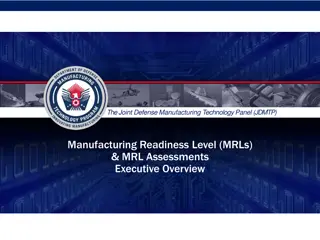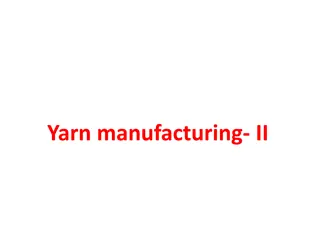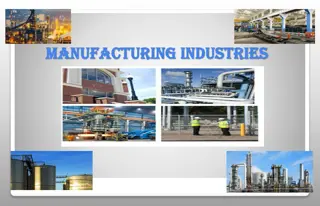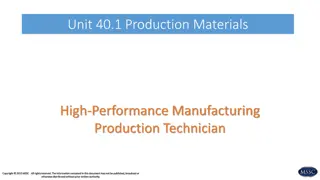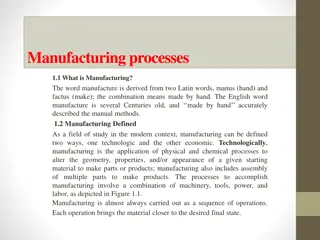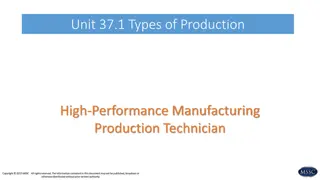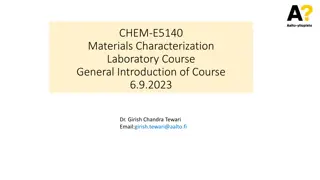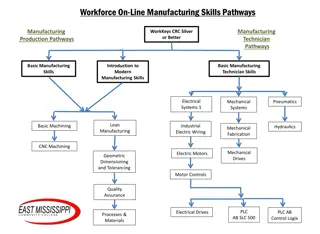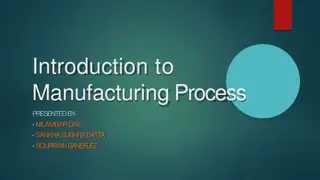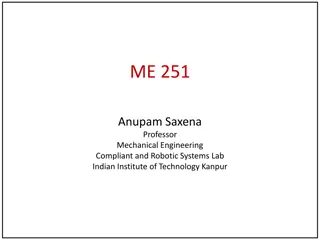IE 251 Manufacturing Materials Course Overview
Explore the impact of modern materials on daily products, understand engineering materials and their properties, and delve into classes of materials like metals, polymers, ceramics, and composites. The course covers topics ranging from atomic structure to phase transformations, emphasizing the role of materials selection in product design and development. Environmental and societal influences on material choices are also discussed.
Download Presentation

Please find below an Image/Link to download the presentation.
The content on the website is provided AS IS for your information and personal use only. It may not be sold, licensed, or shared on other websites without obtaining consent from the author. Download presentation by click this link. If you encounter any issues during the download, it is possible that the publisher has removed the file from their server.
E N D
Presentation Transcript
IE 251 Manufacturing materials Instructor: Dr. Mohamed Ali Eissa Saleh Room: .... 2A 128/1 Phone: ... 467-3703 Grading Midterm #1: . . ..... 15% Midterm #2: . .. 15% Lecture assignments 10 Lab #3: . . 20% Final Exam: . ... 40% Chapter 1, Slide 1 Manufacturing materials IE251
Texts Fundamentals of Materials Science and Engineering, by William D. Callister, Jr.; John Wiley & Sons, Inc. References Engineering Materials 1: An introduction to their Visual Materials... properties and applications - M. Ashby & D.Jones Engineering Materials 2: An introduction to microstructures, processing & design - M. R. Ashby & D. R. H. Jones Chapter 1, Slide 2 Manufacturing materials IE251
IE 251 Manufacturing Materials Introduction to the structure, processing, properties and performance of Manufacturing materials metals, polymers, glasses, ceramics and composites Case studies covering... selection of materials component design analysis of component failures Chapter 1, Slide 3 Manufacturing materials IE251
The course objectives for the student To develop an understanding of the impact of modern materials on the performance of products that are encountered daily, such as bicycles, beverage containers, and sports equipment. To develop an understanding of the classes of engineering materials (metal alloys, polymers, ceramics and composites), with an emphasis on their properties and their uses. To understand how the materials selection process fits into the product design, development and manufacturing process used by industry today. To come to appreciate that product cost and quality play a key role in the materials selection process. To recognize that environmental regulations (emissions), and societal pressures (energy, safety) can strongly influence the adoption of new technologies and alternate materials. To discuss the competition of alternate materials for the same application Chapter 1, Slide 4 Manufacturing materials IE251
syllabus *Chapter 1. Introduction* *Chapter 2. Atomic Structure and Bonding* *Chapter 3. The Structure of Crystalline Solids* *Chapter 4. Imperfections in Solids* *Chapter 5. Diffusion* *Chapter 6. Mechanical Properties of Metals* *Chapter 7. Dislocations and Strengthening Mechanisms* *Chapter 8. Failure** Chapter 9. Phase Diagrams* *Chapter 10. Phase Transformations in Metals* *Chapter 11. Thermal Processing of Metal Alloys* *Chapter 13. Structure and Properties of Ceramics* *Chapter 14. Applications and Processing of Ceramics* *Chapter 15. Polymer Structures* *Chapter 16. Characteristics, Applications, and Processing of Polymers* *Chapter 19. Electrical Properties* Chapter 1, Slide 5 Manufacturing materials IE251
1. Engineering materials and their properties Key points Enormous range of engineering materials Types of material properties Range of properties within and among materials classes Development of new materials and their impact on design Failure to select suitable materials can lead to failure of engineering structures and systems Some failures can be quite spectacular Liberty ships Comet (1st commercial jetliner) Space Shuttle Challenger Chapter 1, Slide 6 Manufacturing materials IE251
Chapter 1, Slide 7 Manufacturing materials IE251
There are more than 50,000 commercially available materials with which an engineer may choose to design Table 1.2 Metals and alloys Steel, aluminum, etc. Polymers Polyethylene, polystyrene, nylon, epoxies, etc. Ceramics and glasses Alumina, silica, silicon carbide, etc. Composite materials Fiberglass, carbon fiber reinforced polymers, etc. Natural materials Wood, leather, silk, bone How to Choose? Chapter 1, Slide 8 Manufacturing materials IE251
The Possible Combinations of Composite Materials are Virtually Unlimited (Fig. 1.1) Metals, Alloys cermets Steel cord tires Composites Ceramics, Glasses Polymers Filled polymers Chapter 1, Slide 9 Manufacturing materials IE251
The Three Ps Price Successful Commercial Products Performance Producibility Chapter 1, Slide 10 Manufacturing materials IE251
We Make Decisions Regarding Material Selection Based on Material Properties Economic Price, availablity, recyclability, etc. Modulus, yield strength, tensile strength, etc. Density, reactivity (oxidation & corrosion), thermal expansion, melting temp., etc. Resistivity, dielectric constant, optical absorption, etc. Forming, joining, finishing, etc. Color, touch, texture, etc. Mechanical Physical and Chemical Electrical, magnetic, optical Manufacturing Aesthetics Chapter 1, Slide 11 Manufacturing materials IE251
Screwdriver Mechanical Economic Physical and Chemical Electrical Magnetic optical Manufacturing Aesthetics Chapter 1, Slide 12 Manufacturing materials IE251
Jet Engine Fan Blades (complex Ni base alloys) Directionally Cast Single Crystal Conventional High Temperature Strength (creep) Oxidation Resistance Chapter 1, Slide 13 Manufacturing materials IE251
Microelectronic Devices are Complex Composite Structures Chapter 1, Slide 14 Manufacturing materials IE251











